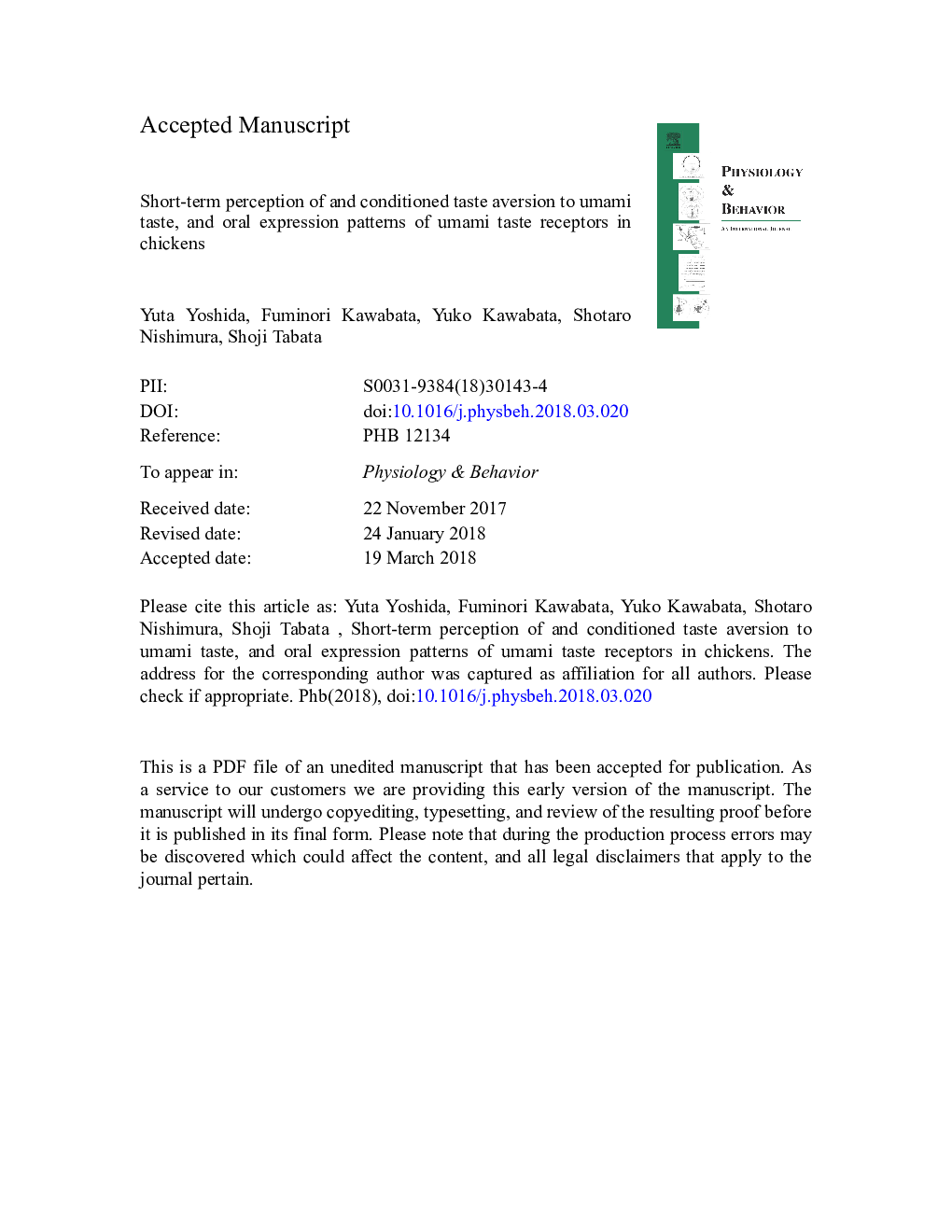| Article ID | Journal | Published Year | Pages | File Type |
|---|---|---|---|---|
| 8650489 | Physiology & Behavior | 2018 | 37 Pages |
Abstract
Umami taste is one of the five basic tastes (sweet, umami, bitter, sour, and salty), and is elicited by l-glutamate salts and 5â²-ribonucleotides. In chickens, the elucidation of the umami taste sense is an important step in the production of new feedstuff for the animal industry. Although previous studies found that chickens show a preference for umami compounds in long-term behavioral tests, there are limitations to our understanding of the role of the umami taste sense in chicken oral tissues because the long-term tests partly reflected post-ingestive effects. Here, we performed a short-term test and observed agonists of chicken umami taste receptor, l-alanine and l-serine, affected the solution intakes of chickens. Using this method, we found that chickens could respond to umami solutions containing monosodium l-glutamate (MSG)â¯+â¯inosine 5â²-monophosphate (IMP) within 5â¯min. We also demonstrated that chickens were successfully conditioned to avoid umami solution by the conditioned taste aversion test. It is noted that conditioning to umami solution was generalized to salty and sweet solutions. Thus, chickens may perceive umami taste as a salty- and sweet-like taste. In addition, we found that umami taste receptor candidates were differentially expressed in different regions of the chicken oral tissues. Taken together, the present results strongly suggest that chickens have a sense of umami taste and have umami taste receptors in their oral tissue.
Related Topics
Life Sciences
Biochemistry, Genetics and Molecular Biology
Physiology
Authors
Yuta Yoshida, Fuminori Kawabata, Yuko Kawabata, Shotaro Nishimura, Shoji Tabata,
